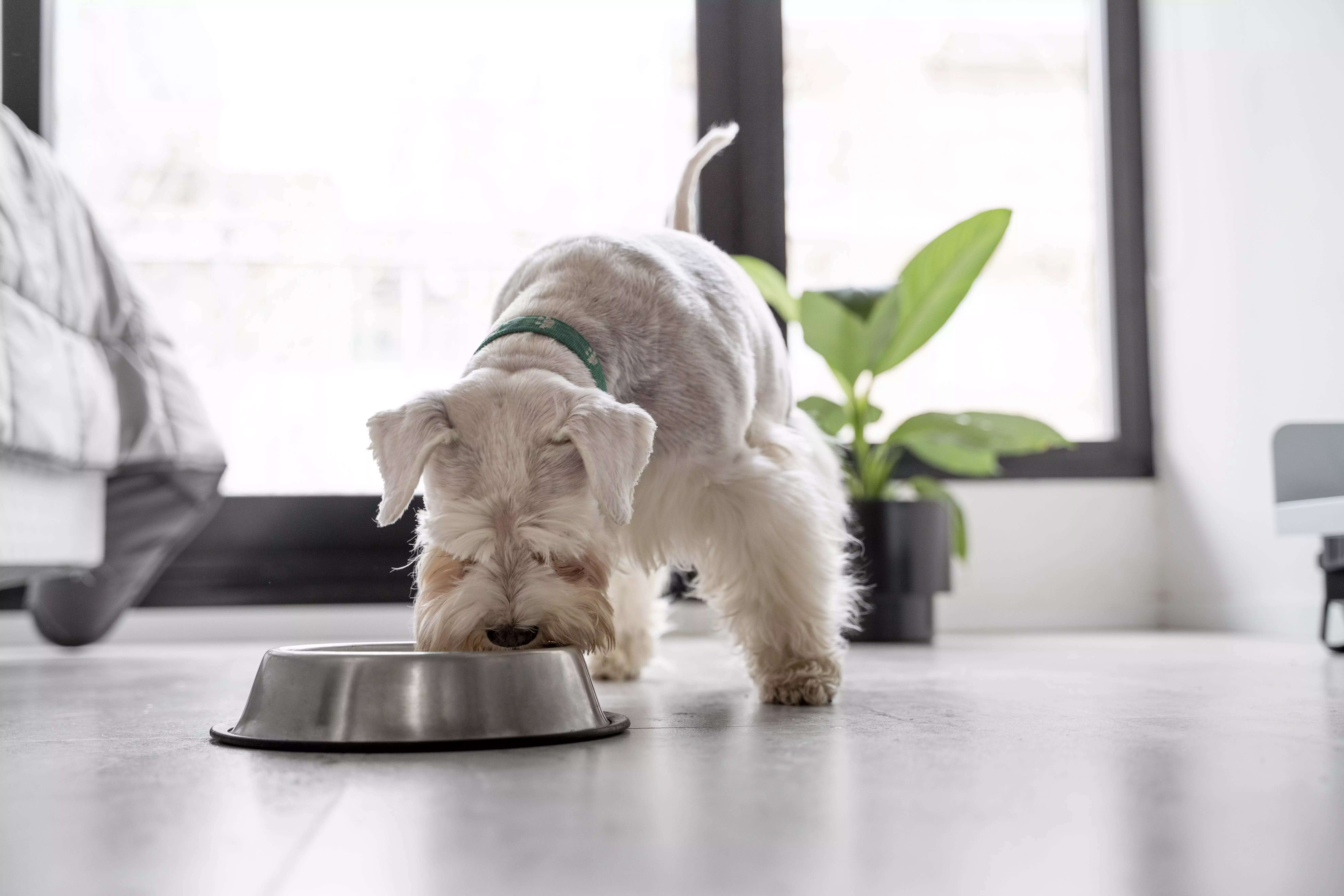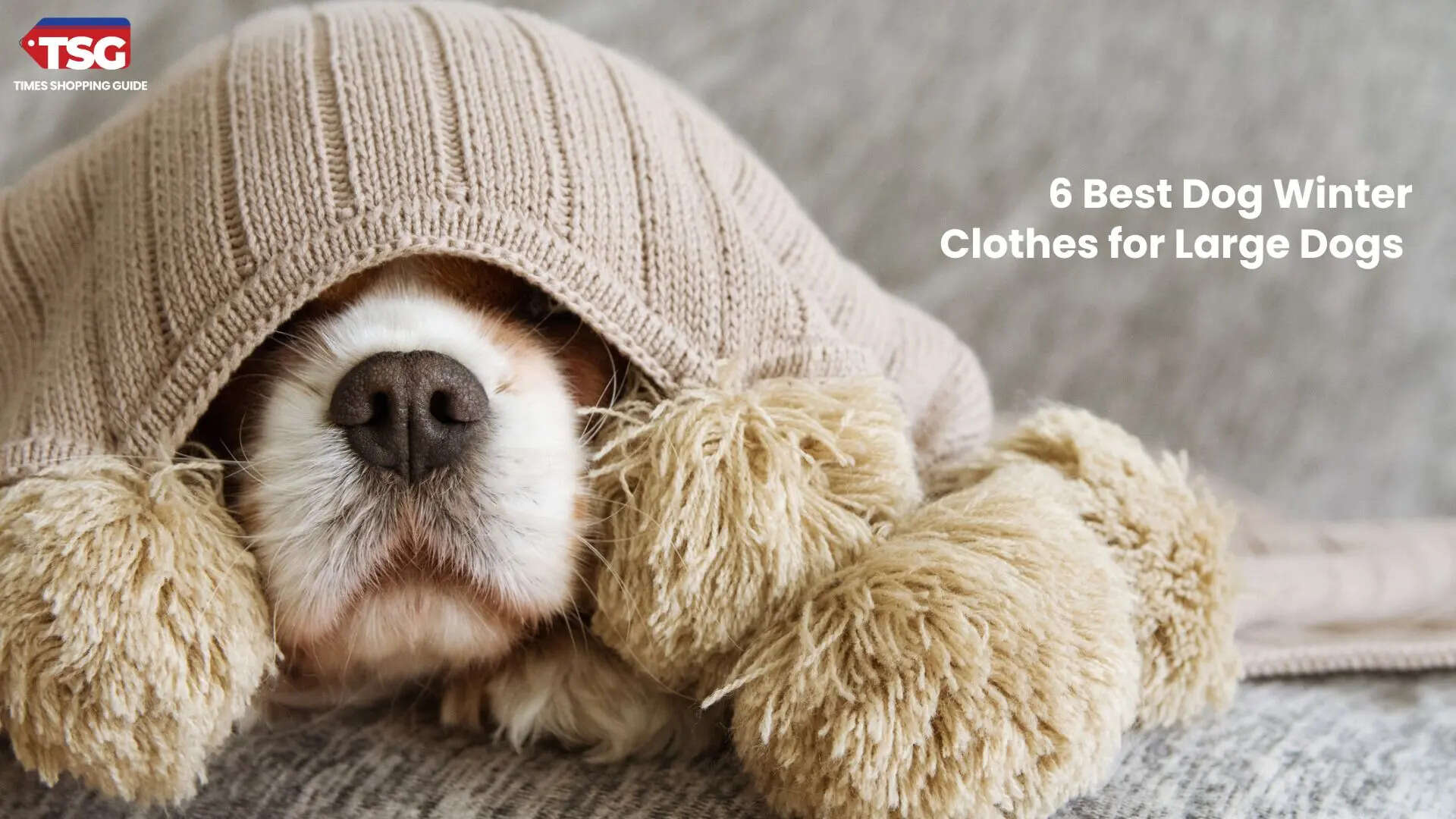- home
- pet supplies
- buying guide best wet dog food you should be giving your dogs
Buying Guide: Best Wet Dog Food You Should Be Giving Your Dogs
Are you a new pet parent who wants to introduce wet food into your dog’s diet but have a lot of queries? Then, we have a detailed explanation of everything you need to know about wet dog food, things that you should consider before buying wet dog food, your pet’s dietary requirements, their age and more.

Dog foods are categorized mainly into two categories, dry dog food and wet dog food. Before selecting the perfect nutritious meal for your dog, you should be looking at various factors like protein quantity, your dog’s breed, their age group, dietary requirements and more. If you are a new dog parent and don’t know how to meet the nutritional requirements of dogs, we have got you covered in this buying guide. Let’s begin.
Types of Dog Food
There are several types of dog food available for your pet. Here are some of them:
- Dry Kibble: It is the most popular type of dog food. Dry kibble contains meat, grains, and vegetables that are dried and reshaped into small pellet-sized pieces. With a dry kibble, you will be able to provide your pet with the essential nutrients they require for a healthy lifestyle
- Wet Canned Food: To keep the ingredients fresh, they are blended and then cooked in the can itself. For a full, balanced nutritional profile that meets your dog's life stage and needs, look for high-quality protein sources such as whole meats, whole food components including fruits, vegetables, and whole grains.
- Freeze-Dried / Dehydrated: This pet food is freeze-dried to eliminate moisture yet maintain most of its natural nutritional value. This type of dog food is popular because it resembles a natural, raw diet. It is free of preservatives and usually contains no artificial ingredients, making it a healthy choice for many dog owners.
- Fresh Dog Food: These fresh dog food options are made using minimal processing, ensuring a more wholesome and natural final product. Fresh ingredients are more digestible, which enables your dog’s body to absorb more energy from the food they’re eating. This gives your dog more readily available energy to use when needed
- Commercial Raw Food: Raw dog food is becoming popular among pet owners who want to provide something that closely resembles canines' "ancestral diet". Raw dog food attempts to replicate that diet by focusing on raw meat, bones, organs, and tiny amounts of fruits and vegetables. Some raw food alternatives may contain extra supplements, vitamins, and minerals
- Homemade Raw Food: This is a great option for pet owners who prefer to take a more hands-on approach to their dog's nutrition. The biggest advantage of making your own raw dog food is that you have total control over the ingredients and quality, which may lead to higher nutritional density, improved digestion, and better overall health for your dog
Wet Food V/S Dry Food
Now you know about the different kinds of options available for fulfilling your pet’s nutritional and dietary requirements. However, choosing the best diet could be very confusing. Not only are there tons of different brands and ingredients, but even the most basic choice of wet versus dry dog food can be overwhelming. Here’s an explanation for both wet and dry dog food. Before jumping to that It’s important to consult your veterinarian for more specific recommendations that best fit your dog’s lifestyle.
Processing
Both wet and dry dog food may provide nutritionally balanced meals, but the key difference lies in the way they are prepared.
- Wet Dog Food: First, the meat ingredients, or sources of protein, are ground. After that, a gravy made of grains, vitamins, and minerals is added. After its mixture, the food is cooked and sterilized to create the canned good. Wet food has a much higher moisture content than dry food.
- Dry Dog Food: Similar ingredients are used in dry food, but the beef combination is ground into a uniform dough that could be baked instead of having gravy added to the result canned. To make kibble, the baked dough is pushed through holes that have been perfectly created. After drying, the kibble is sprayed with vitamins, minerals, fats, and oils, and then packed before the fats and oils go bad.
How to choose Dog Food?
The process to make dry and wet dog food might be different, but they are both equally important for your pet’s diet and health. However, it is less convenient to store and typically more expensive. Here are the pros to of both types of dog food that you should know about: -
Wet Dog Food:
1. Higher moisture content- If your dog is dehydrated or has a medical condition that might benefit from adequate hydration, wet food can be an excellent option
2. Palatability: When compared to dry food, wet dog food frequently has a stronger flavor and scent. If a dog's appetite decreases, this might encourage older or ill pets to eat
3. Satiety: With wet food, dogs tend to create a longer-lasting feeling of being “full.” Increased satiety is useful in weight management, especially in dogs that seem to have a never-ending appetite
4. Easier to chew: For doggies who have dental disease or other oral abnormalities, wet food would be easier to chew than dry food
Dry Dog Food:
1. Convenience: Dry diets are much simpler to serve out beforehand than wet food, and they will remain fresh even if left out all day. This may be advantageous for grazing dogs
2. Dental health benefits: With dry food, dogs are encouraged to chew their food, which helps in preventing tartar buildup and secondary periodontal disease
3. Financially feasible: Dry diets may be more affordable to buy and store over time, depending on one brand to another brand
4. Food enrichment: Since kibble is easier to include into slow feeders and food puzzles, it may enhance a dog's quality of life by engaging its cognitive abilities.
How should they be incorporated in your Dog’s diet
Give your dog the best of both worlds by serving them a nutritional mix of both wet and dry food! Mixing wet and dry dog food is another option that may provide the best of both worlds. It is also very important to ensure that you are still providing the proper daily feeding amount to your fur baby and not overfeeding them.
Here's how to mix and match like a pro:
1. Find the Right Ratio
It isn't a 50/50 divide! Check the feeding guidelines given on the packaging for wet and dry food. These explain how much food is appropriate for your dog based on its weight and activity level. Once those numbers are known, measure the portion of total calories that should come from wet food. Assume you determine that they will consume 25% of their calories from wet food. To figure out how much wet food is in grams or cups, use a calculator online or do some math.
2. Mixing Methods:
Some dogs love their kibble soaked in a bit of wet food while others prefer them separate in the bowl. You should experiment and see what your fur baby enjoys eating the most. Come up with a healthy mix of food that will provide them with the nutrients they need and that is equally appetizing for him or her.
3. Hydration Factor:
Wet food is the best way to boost your dog's water intake, which is especially important for senior dogs or for the ones living in hot climates. Always remember that fresh, clean water should always be available, no matter what kind of food you are serving to your dog.
4. Make your Dog adapt to the new diet:
Avoid putting everything into the bowl at once! A sudden change might upset your dog's digestion. Start by mixing a couple of teaspoons of wet food with their kibble for a few days. Gradually increase the quantity over a week or so until you reach the perfect proportion.
5. Talk to Your Vet:
It is always advisable to consult your vet as they are your dog's personal cheerleader! Discuss your plans to mix wet and dry food for your dog’s health. They can advise you on the best ratio and brands based on your dog's specific needs and health conditions.
While both wet and dry dog food have their own advantages and differences, combining them can offer a well-rounded diet for your fur baby. By combining wet and dry food the right way, you can create a delicious and nutritious diet that keeps your furry friend happy and healthy!
Why is wet dog food important for your pet’s diet?
As pet parents, you want to ensure that your kid is happy, healthy and well-fed. It is important to take into consideration the kinds of food present on the market and choose which one suits them best. Compared to dry dog food, wet dog food offers many benefits that make it a great choice for your pet. Wet food for dogs is a great option to consider while choosing for your dog. It has various advantages, such as enhanced hydration and improved digestion. Here are the reasons as to why you should be feeding your fur babies wet dog food:
1. Increased Hydration
One of the key benefits of wet food is increased hydration. Hydration for dogs is as important as it is for humans. When dogs don't get enough water, they can become dehydrated, leading to various health problems. Wet food for dogs is an excellent way to ensure that your pet is getting enough moisture in their diet. The hydration your fur baby will get from having wet dog food can have a significant impact on your dog's overall health and well-being.
2. Aids in Better Digestion
Making sure that your dog’s digestive system is in good health is vital and choosing the right food can have a big impact on their digestive health. Wet dog food has higher moisture content than dry food, which can lead to better digestion for your furry friends. It can help avoid constipation and other digestive issues. When a dog consumes dry food, they may not consume enough water to compensate for their meal's absence of moisture. Wet dog food is also a great option for older dogs or those with dental issues, who may struggle to eat hard, crunchy kibbles. This can also be easier for dogs to digest as it can be easily broken down than dry food.
3. Better Nutrient Absorption and Utilization
As a pet parent, the responsibility of feeding your kid with the best pet food out there. You must carefully choose pet food based on the dietary requirements. When it comes to a dog diet, one of the most important things to consider is nutrient absorption and utilization. Wet dog food is typically made with high-quality ingredients that are cooked in their own juices or broth. This creates a nutrient-rich, flavorful meal that dogs find irresistible. It is also easier on your pet’s digestive system rather than dry food which can be dehydrating and hard to digest. The nutrients are more easily absorbed by the body, which means your furry friend is getting more of the good stuff.
4. Reduced Risk of Obesity and Weight Gain
Keeping your dog at a healthy weight is very important and their diet has a direct impact on their weight. Wet dog food is a great option to consider, as it can help reduce the risk of obesity and weight gain in dogs. It typically contains fewer calories per serving than dry food. Wet dog food can help dogs feel fuller for longer periods of time which reduces overeating or the need to snack between meals.
This can be especially beneficial for dogs who are prone to overeating or who have a lower activity level. Wet puppy food can also be a great option for puppies who need to gain weight in a healthy way.
How to Select the Wet Dog Food Suitable for Your Dog
There are a lot of factors that you should consider before choosing the perfect wet food for your fur baby’s diet. It might take time for you to find the right one that your pet likes so to keep experimenting. Make sure that you don’t change your dog’s diet too often as it might upset their stomach. One should keep the following factors in mind while before buying wet dog food:
- Ingredients: Pet parents should be on the lookout for real meat like chicken, beef, etc. These should be at the top of the list, followed by healthy carbs such as vegetables, whole grains and essential fats. Avoid food which says mystery meats and fillers like corn or soy
- Dog’s Age: When looking for wet food for puppies, ensure that there is high protein content for their growth. While selecting food for senior dogs, make sure that the food has a soft texture which they will be easier for them to chew and digest
- Health Considerations: Consider your pet’s health while purchasing wet food. I If your dog has allergies, choose a limited ingredient diet or a formula addressing their specific needs like weight management or sensitive stomach
- Portion Control: Wet food is typically higher in calories than kibble. Adjust the amount you feed to avoid overfeeding your dog. Following the feeding guide on the label and consulting your vet for personalized recommendations tailoring to your pet
- Breed: Your dog’s breed also matters while finding the perfect wet food for them. Giant breeds might need more calories, while small breeds might need less. Pet parents should check the wet food's feeding guide for weight ranges
- Budget: Some pet parents might find wet food to be pricier than kibble. Consider how much you'll need each day and compare brands to discover one that suits your budget
- Consult Your Vet: Before introducing wet food into your fur baby’s diet, ask the vet about it. They can help you choose the right formula based on your dog's individual needs and health
Here are some wet foods that you should buy for you dog:
- Jerhigh Wet Dog Food for All Life Stages
- Drools Adult Wet Dog Food
- Kennel Kitchen Lamb Chunks in Gravy
- Pedigree Adult (1+ Years) Wet Dog Food, Chicken & Liver Chunks in Gravy Flavour
- Purepet Wet Adult Dog Food Chicken and Vegetable Chunks
- JerHigh All Life Stages Wet Dog Food, Human Grade High Protein Chicken, Gravy Chicken & Liver
Conclusion
Choosing the right food for your dog is key to their health and happiness. There are many options, including dry kibble, wet food, freeze-dried, fresh, and raw food. While dry food is convenient and good for dental health but lacks moisture. Wet food is great for hydration, picky eaters, and older dogs, but can be more expensive. Mixing wet and dry food can offer the best of both worlds. Consult your vet to determine the best type of wet food for your dog's breed, age, and health.
FAQs
Which is better, wet dog food or dry?
Both wet and dry dog food are essential for maintaining a dog’s good health. The dry food supports their dental health. The texture of dry kibble encourages your dog to chew before they swallow, which improves their digestion and helps clean their teeth. While wet food et food has various advantages, such as enhanced hydration and improved digestion. Pet parents can even mix them and then serve them to their fur babies.
How much wet dog food to mix with dry?
You can choose your dry-to-wet food ratio, but it's recommended that a minimum of 1/3 wet food and 2/3 dry food. Wet and dry food have different calories per gram, so you can't just interchange them.
Will wet dog food help with constipation?
Dog constipation symptoms can be alleviated if you make sure your pup gets enough hydration. Feeding them wet dog food can work sometimes but pet parents should consult a vet as well.
Disclaimer: Times Shopping Guide is committed to bringing you the latest products from the best brands. Our selection is based on market research and positive consumer feedback. Times Shopping Guide is also a part of an affiliate partnership. In line with this, we may receive a portion of the revenue from your purchases. Please note that the product prices are subject to change based on the retailer's deals.








